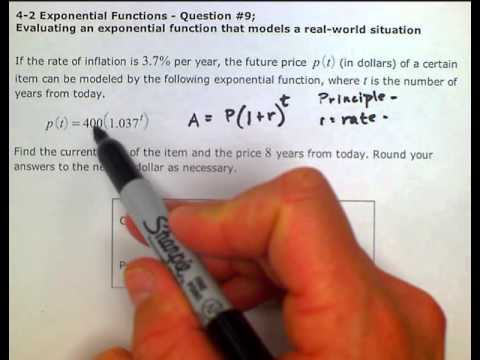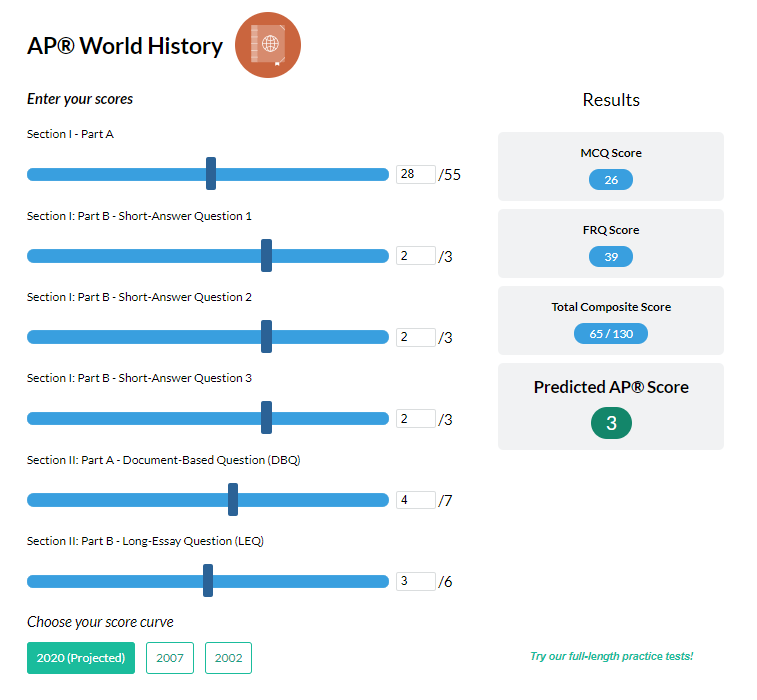Evaluating An Exponential Function That Models A Real-world Situation
An exponential function that models a real-world situation is a mathematical equation that describes a relationship between two variables. It can be used to accurately predict the outcome of a situation based on certain data inputs. Evaluating such a function involves analyzing the equation to determine its behavior and what it means in terms of the real-world situation it models. This can be done by studying the parameters of the equation and how they interact with each other. Additionally, different scenarios can be tested to see how the equation reacts and what type of result it produces. By evaluating an exponential function that models a real-world situation, one can gain a better understanding of the situation and how it can be effectively managed.
What Is An Exponential Function?
An exponential function is a mathematical function that models the growth or decay of a quantity over time. It is typically used to model real-world phenomena which exhibit exponential growth or decay, such as population growth, radioactive decay, or compound interest. Exponential functions can be expressed using the equation y = ab^x, where a and b are constants and x is the independent variable. The value of b determines whether the function is growing or decaying. If b is greater than 1, the function is increasing exponentially, and if b is less than 1, the function is decreasing exponentially. By analyzing the function, we can make predictions about future values and gain insight into the behavior of the underlying phenomenon.
How to Evaluate an Exponential Function
An exponential function is a mathematical expression that models real-world situations that involve growth or decay. Evaluating an exponential function requires an understanding of the basic principles of exponential functions and the skills to apply it to a given problem. To evaluate an exponential function, one must first identify the parameters and the equations associated with it. Then, the parameters must be plugged into the equation, and the result must be interpreted.
When evaluating an exponential function, it is important to understand the concepts of base and exponent and how they relate to the equation. The base is the number that is multiplied by itself, and the exponent is the number that represents the power or number of times the base is multiplied. The equation for an exponential function is usually written in the form y = b^x, where b is the base and x is the exponent.
In addition to understanding the parameters and the equation, one must also be adept at solving for x. This can be done by taking the logarithm of both sides of the equation and using the properties of logarithms to isolate the variable x. After isolating the variable, the value of x can be found by substituting the values for the parameters in the equation.
Finally, the result must be interpreted. This means determining the overall significance of the solution and its relationship to the real-world situation. For example, if an exponential function is used to model the growth of a population, the result of the evaluation may provide insight into the population’s rate of growth or the time it will take to reach a certain population size.
Evaluating an exponential function is an important skill for anyone interested in mathematics or the real-world applications of mathematics. With the right knowledge and skills, one can use exponential functions to gain insight into a variety of situations.
Examining a Real-world Situation
with an Exponential Function
An exponential function is a mathematical tool that allows us to model real-world situations. In order to evaluate an exponential function effectively, we must first consider the context in which it is being applied. It is important to determine if the rate of the function is increasing or decreasing, and if the function is non-negative or negative. Additionally, we must consider the domain of the function and the range of its values.
Once these parameters have been established, we can use the exponential function to analyze the real-world situation. We can use the function to calculate the rate of change in the situation, and to estimate the value of the function at various points. We can also use the function to compare the values of different variables over time, and to predict how the values of these variables may change in the future.
The exponential function is a powerful tool that provides insight into the underlying dynamics of a real-world situation. By evaluating the function in the context of the situation, we can gain a better understanding of the forces that are driving the changes we observe. This can help us to make more informed decisions and to plan for the future.

Modeling the Situation with an Exponential Function
The power of exponential functions lies in their ability to accurately represent real-world situations. From population growth to compound interest, to the spread of a virus, exponential functions are an essential tool for accurately predicting the future. But before we can apply an exponential function to a real-world situation, we need to evaluate it.
Evaluating an exponential function requires us to understand the variables that will affect the growth of the situation. These variables can include the rate of growth, the initial value, and the time frame. Once these variables are determined, we can use them to calculate the value of the function at any given time.
In addition to understanding the variables, we must also be able to interpret the resulting graph. A graph of an exponential function will typically look like an “S” shape, with the rate of growth increasing as time progresses. This allows us to visually see the rate of growth and predict how the situation will change over time.
Finally, we must also consider the implications of the function. Does the model accurately represent the situation, or are there other factors at play? Is the growth rate sustainable, or will it eventually slow down? Answering these questions can help us make more informed decisions about the situation.
By evaluating an exponential function that models a real-world situation, we can gain a better understanding of the forces at work and make more informed decisions about how to address the situation.
Analyzing the Results of the Model
When it comes to evaluating an exponential function, it is important to not only look at the mathematical model, but also to analyze the results of the model in terms of its real-world implications. When considering an exponential function that is used to model a real-world situation, the analysis should include a review of how well the model represents the situation, the accuracy of the results, and any potential changes that could be made to improve the model. Additionally, a review of the data used to create the model should be performed to ensure it is up to date, accurate, and in line with the real-world situation.
The model should then be evaluated against the real-world situation, where the results can be compared and contrasted. The answers to questions such as “what would happen if the model was changed?” or “how would the results of the model differ if different data was used?” can provide valuable insight into the accuracy of the model and its ability to represent the real-world situation. This evaluation process can help to identify any areas for improvement and suggest ways to make the model more accurate and helpful.
Finally, the results of the evaluation should be documented and used as a basis for further analysis. This may include developing alternative solutions or making changes to the model itself. By taking the time to evaluate the results of the exponential function model, it is possible to ensure the model is accurately representing the real-world situation, and that any changes made are in line with the goals of the project.
Exploring Additional Applications of Exponential Functions
Exponential functions are powerful tools for modeling real-world situations. As a result, they have a broad range of application areas, such as population growth, radioactive decay, and compound interest. In addition to these, exponential functions can also be used to model the spread of diseases, the growth of cities, the movement of populations, and the decline of species.
Using an exponential function to model a real-world situation requires careful consideration of the variables at play. For example, if modeling population growth, the initial population size, growth rate, and environmental factors must all be taken into account. Likewise, if modeling radioactive decay, the rate of decay and the amount of material must be taken into account.
In order to evaluate an exponential function that models a real-world situation, it is important to consider the assumptions that were made when constructing the function. Any assumptions that are not valid should be discarded and the function should be modified accordingly. Once the function is properly evaluated, it can be used to make predictions about the future.
Overall, exponential functions are powerful and versatile tools for modeling real-world situations. With careful consideration of the variables involved, they can be used to make accurate predictions about the future. As such, they are invaluable tools for scientists, economists, and business people alike.
FAQs About the Evaluating An Exponential Function That Models A Real-world Situation
1. What should I consider when evaluating an exponential function?
Answer: When evaluating an exponential function, you should consider the parameters of the equation, the initial value, the rate of growth or decay, and how the function models the real-world situation.
2. How can I determine if an exponential function is a suitable model for a real-world situation?
Answer: To determine if an exponential function is a suitable model for a real-world situation, you should compare the function’s output to the actual data from the situation. If the model accurately reflects the trends in the data, it is likely a suitable model.
3. What types of real-world situations can an exponential function be used to model?
Answer: Exponential functions can be used to model a variety of real-world situations, including population growth, compound interest, decay of radioactive materials, and the spread of an epidemic.
Conclusion
In conclusion, evaluating an exponential function that models a real-world situation can be a complex task. However, it is possible to draw meaningful conclusions by looking at the graph of the function, as well as its equation. Additionally, the rate of growth or decay can be determined by looking at the coefficient of the exponential term. With the right knowledge and tools, it is possible to gain a better understanding of the real-world situation that is being modeled by the exponential function.







